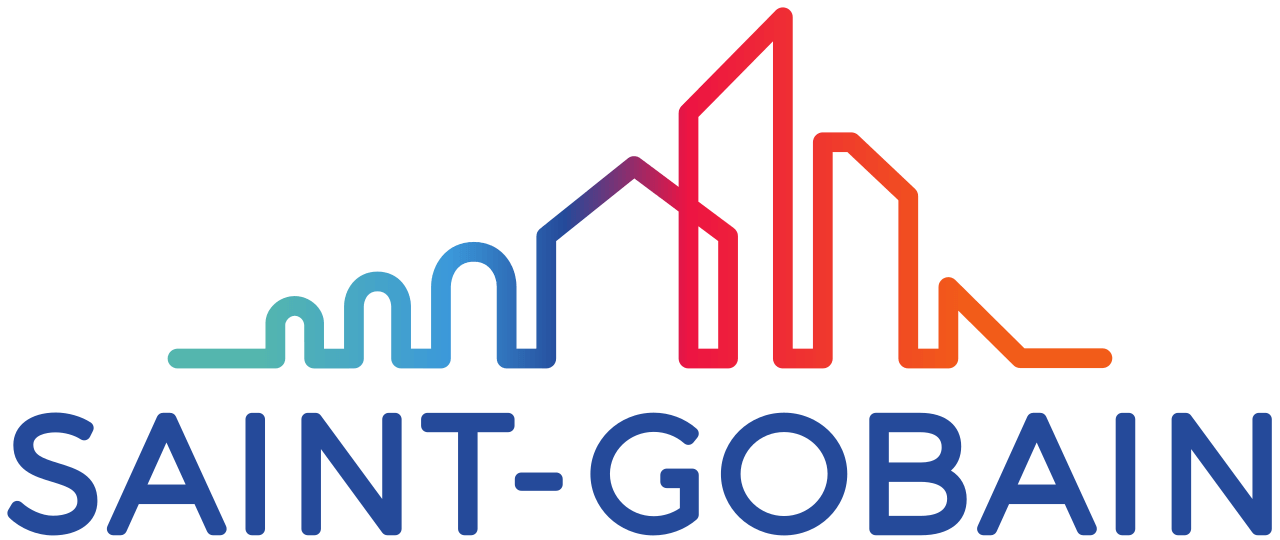According to the U.S. Bureau of Labor, there are 10 million current job openings and 8.4 million unemployed people who are still actively looking for work — so statistically, there’s a job out there for every person searching for one. Indeed, on the surface, it seems like there is no shortage of opportunities for job seekers. Yet, the continued “Help Wanted” signs across the country are evidence of a substantial mismatch between the millions of job searchers and millions of available jobs.
The labor shortage crisis is especially acute in frontline industries with mission-critical or 24/7 operations that rely heavily on hourly workers. Within such organizations, workforce managers almost unanimously cite labor staffing issues as a top challenge. And the current labor crisis won’t end anytime soon: according to a new study by Deloitte and The Manufacturing Institute, U.S. manufacturers are expected to have 2.1 million unfilled jobs by 2030.
The following guide explores the labor shortage in manufacturing, including its effect on operations and the workforce, as well as actionable takeaways workforce leaders can utilize for near-term relief to challenges posed by the labor shortage, as well as long-term strategies for mitigating its impact.
Table of Contents:
What’s Driving the Persistent Labor Shortage?
In short, a perfect storm of factors is at play, starting with the sheer volume of workers retiring in record numbers. More than 75 million Baby Boomers are leaving the workforce in the near future, according to recent figures. Demographers predicted this exodus decades ago, but there simply aren’t enough working-age people to fill the gap Baby Boomers are leaving behind. Also significant is “The Great Resignation,” a term coined by a Texas A&M professor that has been gaining traction among economists. The term refers to workers resigning at record numbers, no longer willing to accept unfavorable working conditions like too much overtime or poor work-life balance in exchange for a paycheck.
Lingering Effects of the Pandemic
While resignation can happen for several reasons, burnout is a major contributing factor for many workers in 24/7, always-on industries. Even before the pandemic, burnout was a serious workplace issue, especially in the United States. But the current global health crisis has exacerbated it to new levels, with millions of frontline workers being pushed to the brink as they struggle with unpredictable work schedules and insufficient downtime. “At the beginning of the pandemic, everybody was celebrating frontline workers for going to work every day,” notes Wes Swearingin, former senior vice president of operations at Medline Industries. “Now, you don’t see those celebrations anymore, and still, the frontline workers are going in day in/day out, and it’s only gotten tougher. They’re only asked to work more hours because there are fewer people in the workforce today.”
Leadership doesn’t have to be right all the time, but leadership has to be right on in terms of being available, being caring, being the voice of reason, being the shoulder to cry on and the hand to pick people up. In times like today, that’s needed.
Rue Patel
Manufacturing Consultant
It’s particularly problematic when retirees and churned employees with specific in-house knowledge and skills take those skills with them — leaving a gaping hole in an organization’s workforce. Without the opportunity for knowledge transfer between experienced workers and new talent, the growing skills gap widens even further. This can have a huge impact on workforce capability: research from Deloitte indicates that the hardest-to-fill jobs have the biggest impact on an organization’s performance and require the most experience.
“The value and the impact of a single employee are now potentially much greater,” notes Peter Draper, Shiftboard vice president of customer success. “On occasion, [companies] have to shut down a production line because the one employee with a [specific] set of skills is not available.”
Beyond the large numbers of retiring Baby Boomers and stressed out and disgruntled employees looking for work elsewhere, another driver of the shrinking working population is simply that fewer young people are attracted to manufacturing jobs. There’s a perception that manufacturing jobs offer limited advancement and training opportunities and that work-life balance is a constant struggle in those careers. Educational programs geared toward production jobs are seeing lower enrollments, too, further limiting manufacturers’ ability to attract younger talent (and limiting the opportunity to shift negative employment perceptions).
How Can Employers Cope?
With all these factors at play, it’s no wonder the labor shortage is such a complex challenge for manufacturers to address. Even so, the fact remains: when employees are leaving their jobs or the workforce as a whole en-masse, it’s time for organizations to take a hard look at the employment experience they’re offering — and the management decisions that shape it. “Leadership doesn’t have to be right all the time, but leadership has to be right in terms of being available, being caring, being the voice of reason, being the shoulder to cry on and the hand to pick people up,” explains manufacturing consultant Rue Patel, a former General Mills executive. “In times like today, that’s needed.”
In the wake of the global health crisis, workers have examined how they relate to the employment experience. They are revisiting their values and the aspects of life important to them: work-life balance, a safe and supportive work environment, feeling engaged and valued in the workplace, and having control over their schedules — just to name a few. But when one (or all) of those components are missing or lacking, workers will start looking elsewhere for another job. “Pay is important for attracting employees, but rarely the reason they stay or leave,” notes Libby Andrews-Simmons, former HR manager at INEOS. “Development, strong front-level leaders, and recognition are much more important to most employees for retention than money.”
In response, companies are shifting away from a corporate-driven organizational strategy to a more employee-led one. According to a comprehensive research report by the Manufacturers Alliance and Aon, only 15 percent of organizations reported “a top-down, corporate-led approach to defining the company work model.” Furthermore, a full third of those surveyed expect employee preference, not company policy, to be the primary driver of work arrangement, representing a whopping four-fold increase from before the pandemic.
Pay is important for attracting employees, but rarely the reason they stay or leave. Development, strong front-level leaders, and recognition are much more important to most employees for retention than money.
Libby Andrews-Simmons
Former HR Manager, INEOS
To continue to attract and retain key talent, leaders and managers must rethink shift work and the experience of employment for shift workers. Innovative approaches are crucial to mitigate the dual challenges of keeping employees engaged while keeping the business operating smoothly and efficiently. Indeed, many workforce managers are now turning to forward-looking initiatives like hybrid work schedules and technology-enabled models such as employee scheduling automation to help them prioritize workers’ preferences, offer predictable and consistent scheduling, and provide more flexibility.
6 Strategies to Overcome Labor Shortage Challenges
Here, we look at strategies manufacturers can use to boost the agility and resiliency of their hourly workforce. Read how to alleviate the pain of day-to-day employee scheduling in manufacturing and increase workforce agility. We also share long-term strategies to tranform the experience of shift work over the long run, including one aspect that impacts employees the most: the work schedule.
1. Improve Day-to-Day Workforce Scheduling Operations
Unexpected shift callouts for sickness or personal matters. Unplanned production ramps. Supply chain disruptions. If the past few years taught workforce managers anything, it’s that adapting to day-of changes can make or break an organization’s ability to keep operations running smoothly with limited resources.
Today, employee scheduling technology with “smart logic” empowers workforce managers with the tactical ability to respond quickly and efficiently to change, no matter how operating plans change. Intelligent automation provides managers with the operational agility needed to make day-to-day scheduling decisions quickly — and strategically. Tailor-fit software solutions and automation help schedulers identify and assign the most cost-effective, eligible workers for every shift, job, or work site, improving scheduling efficiency by as much as 30 percent.
Get manufacturing insights delivered right to your inbox. Subscribe now.
2. Uncover Hidden Capacity in Your Existing Workforce
Sometimes, the solution is hidden in plain sight: in this case, employees who are qualified and eager to perform a certain task or pick up a certain shift. However, what’s missing for many workforce managers tasked with managing large teams and multiple facilities is a convenient, powerful way to identify those workers and match them to the jobs at hand. “You may not even be aware that you have an opportunity to shift this individual to another area or consolidate activities to this group of individuals who are qualified to do that work,” agrees Medline’s Swearingin.
Connecting daily operations with the labor resources available is best achieved by maintaining a robust central database containing detailed employee profiles, including insights into employee work preferences, overtime status, schedule flexibility, credentials, and productivity by role. Such information gives managers the necessary visibility to strategically map workforce capabilities to production needs.
In this way, schedulers can tap hidden workforce capacity to fill shifts quickly during production ramps. Real-time visibility into workforce data helps schedulers assign available, qualified, and cost-effective employees — where and when they’re needed.
3. Leverage Flex Pools in Your Scheduling Process
Flex pools, generally defined as a group of workers that can cover shifts quickly during a surge in labor demand or backfill shifts when regularly scheduled employees call off at the last minute, can play a critical role in many organizations’ comprehensive scheduling strategies, particularly for today’s manufacturers, who must constantly adapt to shifting demand and labor constraints.
Some manufacturers staff their flex pools in-house, leveraging part-time or full-time employees, while others include contingent labor sources. Regardless of the labor source, real-time visibility into workers’ qualifications, overtime status, and availability is essential to this strategy’s success. Fortunately, technology exists equipped with automated tools that enable visibility at scale, bottom-up scheduling for workers, credential and qualification tracking, and real-time communication that provides workers with shift details and location information all in one place. This high degree of communication is especially important to workers who are filling shifts in multiple locations.
4. Embrace Worker-Friendly Scheduling
Workers today clearly want a say in when they work. This marks a departure from traditional workforce operations at many production facilities, where schedules are created far in advance using a rigid, top-down approach. Organizations must rethink how work is scheduled to address worker dissatisfaction and provide employees with more flexibility.
Complementary scheduling strategies that match near-term production goals with labor availability and worker preferences are gaining traction among savvy schedulers. Concepts such as bottom-up scheduling, self-serve scheduling, voluntary overtime, and shift trading are highly effective in achieving shift coverage and keeping workers happy.
Allowing workers to communicate their availability, select their shift preferences, trade shifts, or pick up extra hours can dramatically improve their perceptions of job satisfaction because it gives them more autonomy over their work-life balance. At the same time, schedulers are relieved of the time-consuming task of managing these types of day-to-day schedule changes, freeing them up to focus on other important initiatives that further the company mission.
5. Champion Hourly Employee Development
Advancement training for first-level leaders and cross-training programs for the workforce as a whole are two vital components of hourly employee development that pay huge dividends in terms of hourly employee job satisfaction and operational resilience.
Advancement Training
Developing first level-leaders — those who supervise your frontline staff — is an important strategy for building a sustainable workforce. Employees in complex industries tend to get promoted because of their technical skills, but they often have limited training and skills for supervising people. “One of the things we always want to be mindful of is the number one reason people leave companies: they don’t like their boss,” notes Andrews-Simmons. These new leaders may have previously worked side-by-side with people they’re now supervising, so it’s crucial to equip them with the skills they need to lead, train, and discipline their staff in a way that doesn’t erode relationships.
Cross-Training
Cross-training is another aspect of employee development that reaps broad benefits in the near and long term. Your best employees may not want a traditional leadership role, per se, but they love doing the hands-on work. These workers want opportunities to broaden and deepen their skills on the job. Some may strive to be subject matter experts in their trade. Others might want to keep their skills versatile and are eager to learn new equipment or get trained for new jobs. Offering cross-training opportunities helps hourly workers feel valued and keeps them engaged over time — two factors that heavily influence hourly worker perceptions when considering employment opportunities.
6. Expand Beyond Your Existing Workforce When Needed
Hiring managers can fill the gaps in their labor resource needs, which are especially challenging during peak production cycles, by tapping new sources of labor, including part-time workers and retirement pools, and leveraging contingent labor. Organizations can also turn to retirement pools, as many retired workers are often willing — and eager — to pick up shifts. Such workers require minimum training since they already possess the institutional knowledge necessary to complete many tasks. Partnerships with trade schools offer another area where organizations can find qualified labor. These kinds of workers are instrumental in providing improved operational flexibility and seasonal support.
Part-Time Workers
Part-time workers are a viable option for organizations needing additional staff during peak periods. Effective programs can increase productivity, minimize employee downtime, and reduce costs. Yet, many organizations struggle with using part-time staff because of labor forecasting, recruitment, training, and scheduling challenges. Today’s employee scheduling and HCM solutions leverage intelligent software and robust data to automate complex processes around workforce management, making part-time staffing programs more accessible and practical.
Contingent Labor
Contingent labor includes employees who are under contract or working on a temporary basis. This labor staffing strategy increases workforce flexibility for organizations that need additional labor but don’t require permanent staff over the long term. With today’s sophisticated workforce scheduling solutions, operations leaders can better manage the complexity of contingent labor programs. These automated technologies leverage smart logic to identify resource gaps by position, department, and skill set. Managers can then make data-driven decisions when assigning contingent resources to open shifts — while also maintaining compliance with labor and safety regulations.
How Technology Helps
There’s no single solution to fix the labor shortage crisis in manufacturing; instead, effective strategies will involve a comprehensive, multi-department approach. However they address it, organizations must continue to adapt to unlock new coverage possibilities, expand their workforce capacity, and accommodate workers’ needs. The companies that consciously invest in these areas will undoubtedly position themselves for success, while those that don’t will almost certainly continue to struggle. Some of those necessary shifts won’t happen overnight, of course, as INEOS’s Andrews-Simmons explains. “It takes about five years just to affect a true cultural change in an organization,” she says.
But manufacturing leaders and workforce managers should also take note that an opportunity already exists to boost immediate improvement: rethinking the employee schedule. Technology-driven solutions enable adaptive workforce operations, higher job satisfaction, and optimized coverage. Technology also allows organizations to easily supplement their workforce with contingent labor such as part-time, contract, and temp labor.
According to Shiftboard’s Draper, implementing such solutions reflects just one of the ways leaders can uncover “win-win” strategies that benefit both employers and employees in light of the ongoing labor shortage. “Shift flexibility is a perfect example of this, but there are many more opportunities if you look carefully,” Draper explains. “As leaders, we need to look for those opportunities, and ironically in this market, they may exist more now than they did years ago.”
This eBook explores labor shortage challenges in manufacturing, including its effect on operations and the workforce. It also offers actionable takeaways operations leaders can utilize to improve the agility and resiliency of their workforce — despite the labor shortage.
Trusted by the World’s Most Recognized Brands





